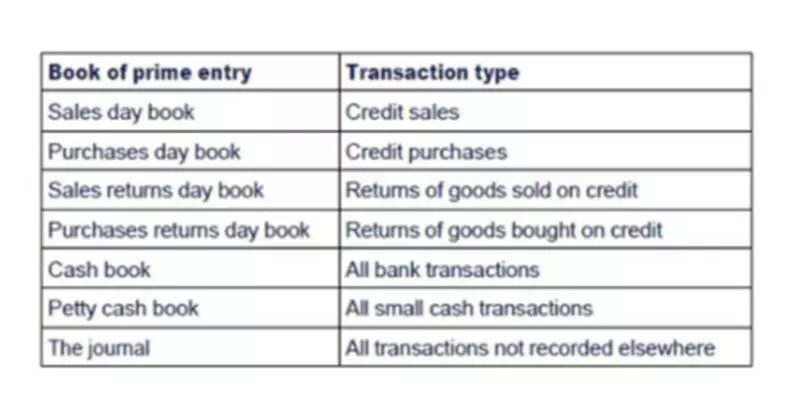What Is Opportunity Cost? The Motley Fool
Content

The Balance uses only high-quality sources, including peer-reviewed studies, to support the facts within our articles. Read our editorial process to learn more about how we fact-check and keep our content accurate, reliable, and trustworthy. opportunity cost is the proverbial fork in the road, with dollar signs on each path—the key is, there is something to gain and lose in each direction. You make an informed decision by estimating the losses for each decision. She has edited thousands of personal finance articles on everything from what happens to debt when you die to the intricacies of down-payment assistance programs.
How Much ‘Opportunity Cost’ Can You Afford to Spend on Sprayer Inefficiency? – CropLife
How Much ‘Opportunity Cost’ Can You Afford to Spend on Sprayer Inefficiency?.
Posted: Mon, 28 Nov 2022 17:15:00 GMT [source]
Unlike explicit costs, implicit https://www.bookstime.com/s correspond to intangibles. Hence, they cannot be clearly identified, defined or reported. This means that they are costs that have already occurred within a project, without exchanging cash. This could include a small business owner not taking any salary in the beginning of their tenure as a way for the business to be more profitable.
Choosing How to Invest Your Resources
Sacrifice is a given measurement in opportunity cost of which the decision maker forgoes the opportunity of the next best alternative. In other words, to disregard the equivalent utility of the best alternative choice to gain the utility of the best perceived option. If there are decisions to be made that require no sacrifice then these are cost free decisions with zero opportunity cost. When choosing an option among multiple alternatives, the opportunity cost is the gain from the alternative we forgo when making a decision. In simple terms, opportunity cost is our perceived benefit of not choosing the next best option when resources are limited.
Yet because opportunity cost is a relatively abstract concept, many companies, executives, and investors fail to account for it in their everyday decision making. For example, the Opportunity Cost of changing supplier could mean an increase in per unit cost but higher quality products. In the short term, you are investing more money than before so you consider increasing the price of the product for the customer. But in the longer term, these high-quality products can lead to happy customers.
Opportunity cost and investing
It’s about keeping in mind that one action or choice can preclude you from taking advantage of other options. The concept of opportunity cost does not always work, since it can be too difficult to make a quantitative comparison of two alternatives. It works best when there is a common unit of measure, such as money spent or time used. For investors, explicit costs are direct, out-of-pocket payments such as purchasing a stock or an option, or spending money to improve a rental property. In this example, the opportunity costs are continued interest gains on bond “A” and the initial loss of $10,000 on bond “B” while hoping to recover it and increase your profits in the future. Using the simple example in the image, to make 100 tonnes of tea, Country A has to give up the production of 20 tonnes of wool which means for every 1 tonne of tea produced, 0.2 tonne of wool has to be forgone.
- Implicit costs are the opportunity costs of utilising resources owned by the firm that could be used for other purposes.
- His work has appeared in CNBC + Acorns’s Grow, MarketWatch and The Financial Diet.
- Mostly, we overlook the things we must forgo at the time of making those decisions.
- If you purchase bonds and hold them to maturity, they will provide a rate of return as stated.
- It’s found money, so there’s no loss to you—unless you think about the opportunity cost.
As an investor, opportunity cost means that your investment choices will always have immediate and future losses or gains. Absolute advantage on the other hand refers to how efficiently a party can use its resources to produce goods and services compared to others, regardless of its opportunity costs. Despite the fact that sunk costs should be ignored when making future decisions, people sometimes make the mistake of thinking sunk cost matters. Economic profit is strictly an internal value used for strategic decision-making. There are no regulatory bodies that govern public reporting of economic profit or opportunity cost. Whereas accounting profit is heavily dictated by reporting rules and frameworks, economic profit factors in vague assumptions and estimates from management that do not have IRS, SEC, or FASB oversight. In economics, risk describes the possibility that an investment’s actual and projected returns are different and that the investor loses some or all of the principal.
Increasing Opportunity Costs
This expense is to be ignored by the company in its future decisions and highlights that no additional investment should be made. Sunk costs are costs that have been incurred already and cannot be recovered. As sunk costs have already been incurred, they remain unchanged and should not influence present or future actions or decisions regarding benefits and costs. Decision makers who recognise the insignificance of sunk costs then understand that the “consequences of choices cannot influence choice itself”. Explicit costs are the direct costs of an action , executed either through a cash transaction or a physical transfer of resources. In other words, explicit opportunity costs are the out-of-pocket costs of a firm, that are easily identifiable.

Opportunity cost contrasts to accounting cost in that accounting costs do not consider forgone opportunities. Consider the case of an MBA student who pays $30,000 per year in tuition and fees at a private university. For a two-year MBA program, the cost of tuition and fees would be $60,000. If the student had been earning $50,000 per year and was expecting a 10% salary increase in one year, $105,000 in salary would be foregone as a result of the decision to return to school. Adding this amount to the educational expenses results in a cost of $165,000 for the degree.
Since they are not tangible by definition, opportunity costs are often overlooked. By recognizing the potential missed chances and opportunities by selecting one investment over another, one can make better decisions.

Opportunity cost refers to what you miss out on by going with one option over another comparable option. The concept is an important part of economic and financial planning, and making decisions with opportunity costs in mind helps ensure that funds, resources, and time are put to optimal use. Since resources are limited, every time you make a choice about how to use them, you are also choosing to forego other options.
A sunk cost may also be termed as the initial outlay to buy an expensive heavy equipment, which can be amortized with time, but which is sunk in the sense that you will not get it back. An opportunity cost is to buy a heavy equipment with a projected return on investment of 5% or one with an ROI of 4%.
- What is clear from this model is that it is quite costly upfront.
- If resources are to be allocated efficiently, then the value of using these resources in alternative ways needs to be made explicit.
- This paper estimates the opportunity cost of underpricing or subsidizing gas in Bangladesh.
- The prevailing opinion was that the opportunity cost could not be applied outside of cases of limited resources.
